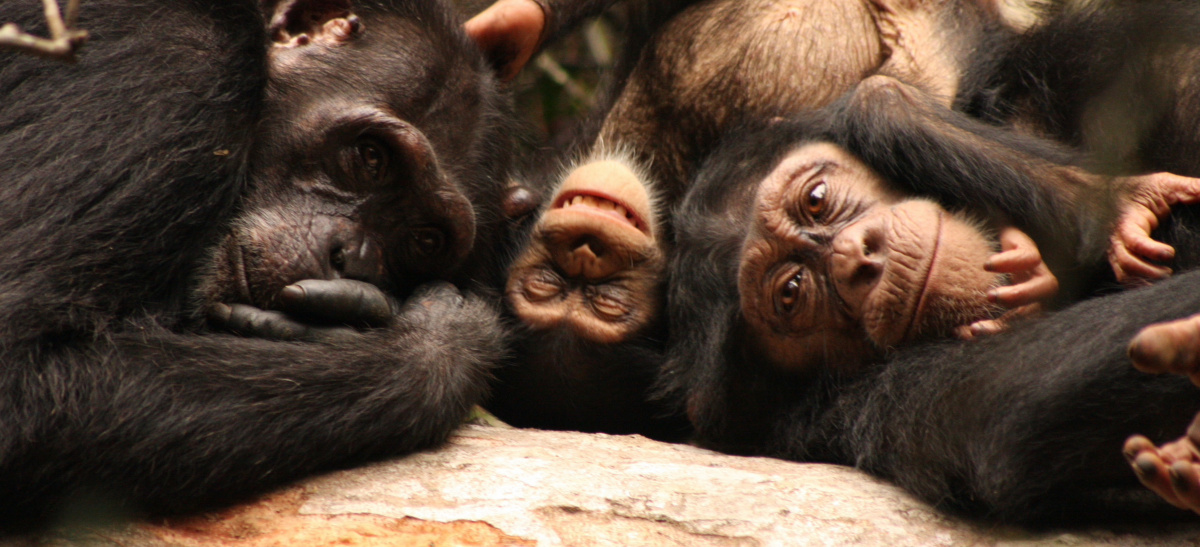New report highlights challenges and opportunities for offsetting private sector damage to Western Chimpanzee habitat in West Africa
Primate experts from the IUCN and Re:wild release new study that finds even the most ambitious and cutting-edge offsets are not yet enough to effectively protect Critically Endangered chimpanzees

Photo: Sonja Metzger
Even the most ambitious and cutting-edge efforts by the private sector to offset damage to wildlife habitat in Africa don’t yet go far enough to genuinely protect great apes, according to findings released today, October 28, by the IUCN SSC Primate Specialist Group and Re:wild. The report, which uses the recent establishment of the Moyen Bafing National Park in Guinea as a case study, provides recommendations to strengthen offset projects so that they result in a true “net gain” for the endangered species they aim to protect.
“The Moyen-Bafing National Park is the protected area harboring the largest remnant population of Critically Endangered western chimpanzees,” said Genevieve Campbell, lead of the ARRC Task Force of the Primate Specialist Group Section on Great Apes, Re:wild senior associate and co-author of the report. “Its size and scope as an offset for great apes is unprecedented and everyone involved has worked hard to make it a success. But in order for these kinds of offsets to be truly effective in the conservation of great apes, they need to go even further than what we see here.”
The Moyen Bafing National Park was created by a partnership between the private lending branch of the World Bank (the International Finance Corporation), the Wild Chimpanzee Foundation, the government of Guinea, and two mining companies: the Guinea Alumina Corporation (GAC) and Compagnie des Bauxites de Guinée (CBG). The new 1.5 million acre protected area protects an estimated 5,000 chimpanzees to compensate for the estimated 73-143 chimpanzees likely to be impacted by the two companies’ mining projects.
Lending banks, national governments and international treaties are increasingly calling for companies to offset their biodiversity impacts, requiring either “no net loss” or “global net gains” in biodiversity. According to today’s report there are a number of shortcomings with the project that will prevent it from meeting the “global net gains” goal required.
For example, the mining companies have committed only to protecting the new national park for 20 years, which does not even cover the 50-year average lifespan of a chimpanzee in the wild. There is also a large dam being built in the middle of the park, which could result in the death of 1,500 chimpanzees. In addition, several other mining concessions overlap with the offset area, so the future survival of the chimpanzees that live here remains uncertain.
“The reality is that while the impacts at the mining site are permanent, the protection of this larger population of western chimpanzees is not,” said Dirck Byler, vice chair for the section on Great Apes of the IUCN SSC Primate Specialist Group, Re:wild director of ape conservation and a co-author on the report. “The population of chimpanzees that lives here is one of the most viable populations in the region. This park needs to be protected in perpetuity if we want to ensure that chimpanzees in west Africa do not go extinct.”
The report concludes that not only do these two mining companies need to protect the park in perpetuity to genuinely offset their damage, but that this should be a requirement for all offset projects for great apes. It also calls for the government to review the plans for the Koukoutamba dam within the park and to investigate either less impactful locations for the dam or cleaner and greener methods of electricity generation.
“There is a tremendous opportunity here to create and sustain a flagship national park for a high-profile species and contribute to the country’s UN targets for terrestrial protected areas,” said Rebecca Kormos, vice chair for the section on great apes of the IUCN SSC Primate Specialist Group and co-author of the report. “We need to commit as a global community to protecting our closest living relatives on Earth. This means that when their habitat is destroyed, we must compensate for this loss—permanently.”
The western chimpanzee is a subspecies of chimpanzee that has suffered an 80 percent population decline in the last 25 years as the result of habitat destruction, poaching and disease. It is the most at risk of extinction of the four subspecies of chimpanzee. Once found in 11 countries across west Africa, the western chimpanzee is no longer found in Benin, Burkina Faso and Togo. Because Guinea has the largest chimpanzee population of all countries in the region—there is an estimated 33,000 individuals in Guinea, which is almost two-thirds of the total population—it is a critically important country for the conservation of the subspecies.
“While the offset focuses on chimpanzees, at the same time thousands of other, less well known species are protected as well,” said Hjalmar Kuehl, head of junior research group at the German Centre for Integrative Biodiversity Research (iDiv), and co-author of the report. “Chimpanzees are thus an extremely important umbrella species for the integral protection of regional biodiversity.”



